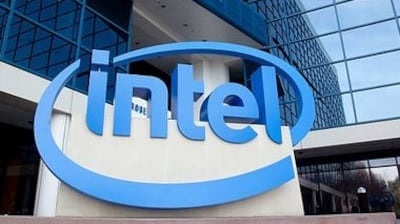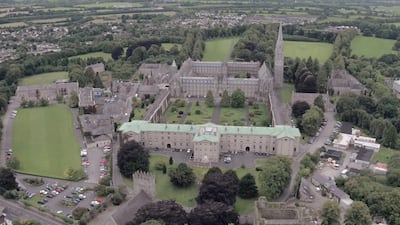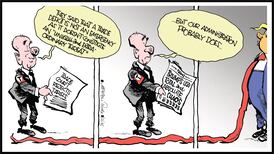Gordon Moore died, at the age of 94, in Hawaii last Friday. If you believe in the afterlife, you might like to imagine him arriving in heaven and taking over St Patrick’s seat as patron saint of Ireland.
Even if they don’t know him, most people will have heard of Moore’s Law – his prediction that the number of transistors that could fit on an integrated circuit would double every two years. It is the heart of the revolution in the power and availability of computers that Moore himself, as co-founder of Intel, helped to drive.
The weird resurgence of the Kerry Babies case last week has prompted reminiscences of what a dire place Ireland was in the 1980s: organised misogyny, mass unemployment, mass emigration, hunger strikes, moving statues, vicious homophobia, mad crusades on abortion and divorce, Charles Haughey’s kleptocracy – and everywhere the acrid whiff of failure.
If young people were not leaving to find work, they were leaving because they felt like freaks in their own country. And official Ireland’s response was Brian Lenihan’s breezy comment that “After all we can’t all live on a small island”.
Cillian Murphy’s view of Ireland in the 1980s as ‘the dark ages’ misses the point
Who Killed Una Lynskey? by Mick Clifford – Garda heavy gang under the spotlight in the investigations of two disturbing 1970s murders
The Irish Times view on Nell McCafferty: a fierce voice for justice
Joe Joyce obituary: Award-winning journalist, writer and biographer
Which is why it was so amazing to get a flyer through my letterbox one day near the end of that grim decade, from a company I had never heard of: “We are now ready to start building the Intel Ireland Team”. It sought job applications from manufacturing engineers, business system managers, test engineering managers.
[ Chipmaker increasingly on outside after decades of ‘Intel Inside’Opens in new window ]
I was not any of those things, but the very notion of a high-tech corporation canvassing for recruits to well-paid jobs in Ireland was astounding. It must have been Gordon Moore’s decision to set up here – he was still Intel’s chief executive in 1987.
More than half of the world’s microprocessors were being sourced in Ireland, but you couldn’t get a divorce
It was a nice historical joke that Intel moved into the space occupied by the Catholic hierarchy. It bought Collinstown stud near Leixlip, a 12-minute drive from the bishops’ headquarters in Maynooth.
Over the next decade, Moore’s Law would replace God’s law as the ruling force on the “small island”. If there is a Ground Zero for the new Ireland, it is surely that stud farm where Intel, having first built an assembly line, decided to create Fab 10, the world’s first high-volume 200-millimetre semiconductor wafer plant.
If the wafer of the Host was the Church’s miraculous object, Intel’s wafer was the Pentium chip – the beating pulse of the IT revolution. It made Leixlip ultimately much more potent than Maynooth.

In 1986, Ireland’s entire GDP was, in dollar terms, $28.5 billion. When Intel’s current round of expansion in Leixlip is complete, it will have invested $30 billion here.
Intel was a magnet for reverse emigration. Most of its early recruits were Irish people who had been working for Philips in Eindhoven or Siemens in Munich. Intel gambled on the pull of home, guessing that it could draw them back.
But this was not the Ould Sod. It was Young Ireland. In 1993, the average age of Intel’s workers in Leixlip was 26 – only a handful were over 40. At least on the initial assembly line, 60 per cent of the staff were women.
[ Moore’s Law, still proving itself true after 50 yearsOpens in new window ]
More than 60 per cent of Intel’s Irish workers had third-level degrees. In Fab 10, where the Pentium chip was made, it was 90 per cent.
This was Ireland’s Great Leap Forward. In one bound, it went from backwater economy to a place that could sustain one of the most technologically advanced industrial plants ever created anywhere in the world.
And yet – and this is what makes the story of Irish modernity so surreal – all of this was happening in a country that still had Magdalene laundries and Mother and Baby homes and had recently conducted (in the Kerry Babies tribunal) a witch trial.
We had, as almost all portable computers boasted at the time, Pentium Inside. But the outer surface was still coated in Catholic exceptionalism.

More than half of the world’s microprocessors were being sourced in Ireland, but you couldn’t get a divorce. The Pentium prototypes were being developed in Leixlip while Ireland was finally decriminalising homosexuality – but only because the European Court of Human Rights made us do it.
I always thought it rather amusing that both Maynooth and Leixlip were obsessed with the maintenance of purity. For the bishops, it was the supposed moral hygiene that made Ireland, in the title of Derek Scally’s terrific book, The Best Catholics in the World.
For Intel, it was the hyper-cleanliness demanded by their manufacturing processes, the rituals of extreme decontamination its workers had to undergo every morning before they entered the holy of holies. Over time, one of these ideas of a spotless Ireland would win out over the other.
There’s nothing perfect about the globalised Ireland that has emerged from this process. But the answer to “What have the American corporate capitalists ever done for us”? is quite a long one.
If, because of the Kerry Babies story, you’ve been reading about 1980s Ireland, you might want to light a candle for Gordon Moore, who did so much to end it. The switch from pent-up to Pentium, the shift of Ireland’s centre of gravity from Maynooth to Leixlip, is a hinge on which so many other possibilities turned.













